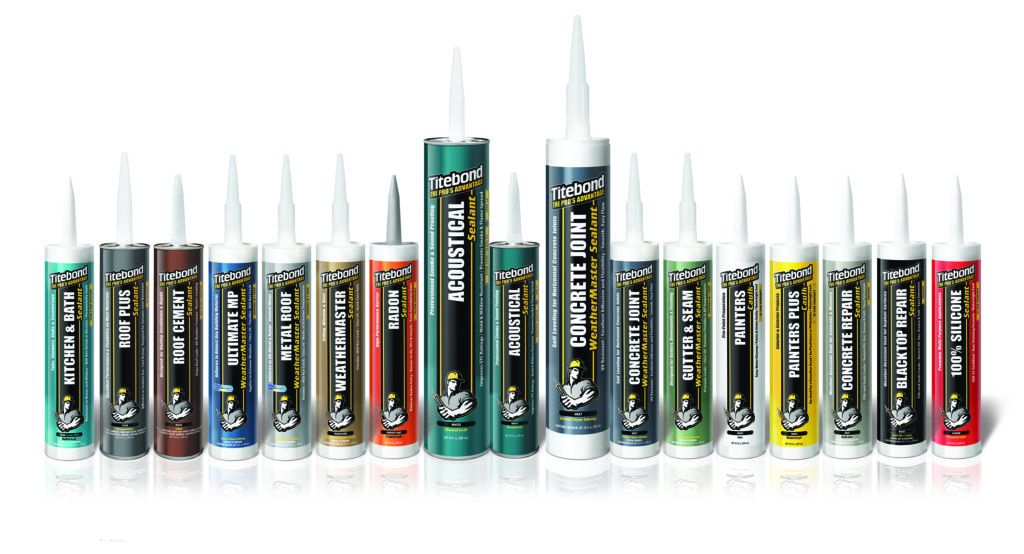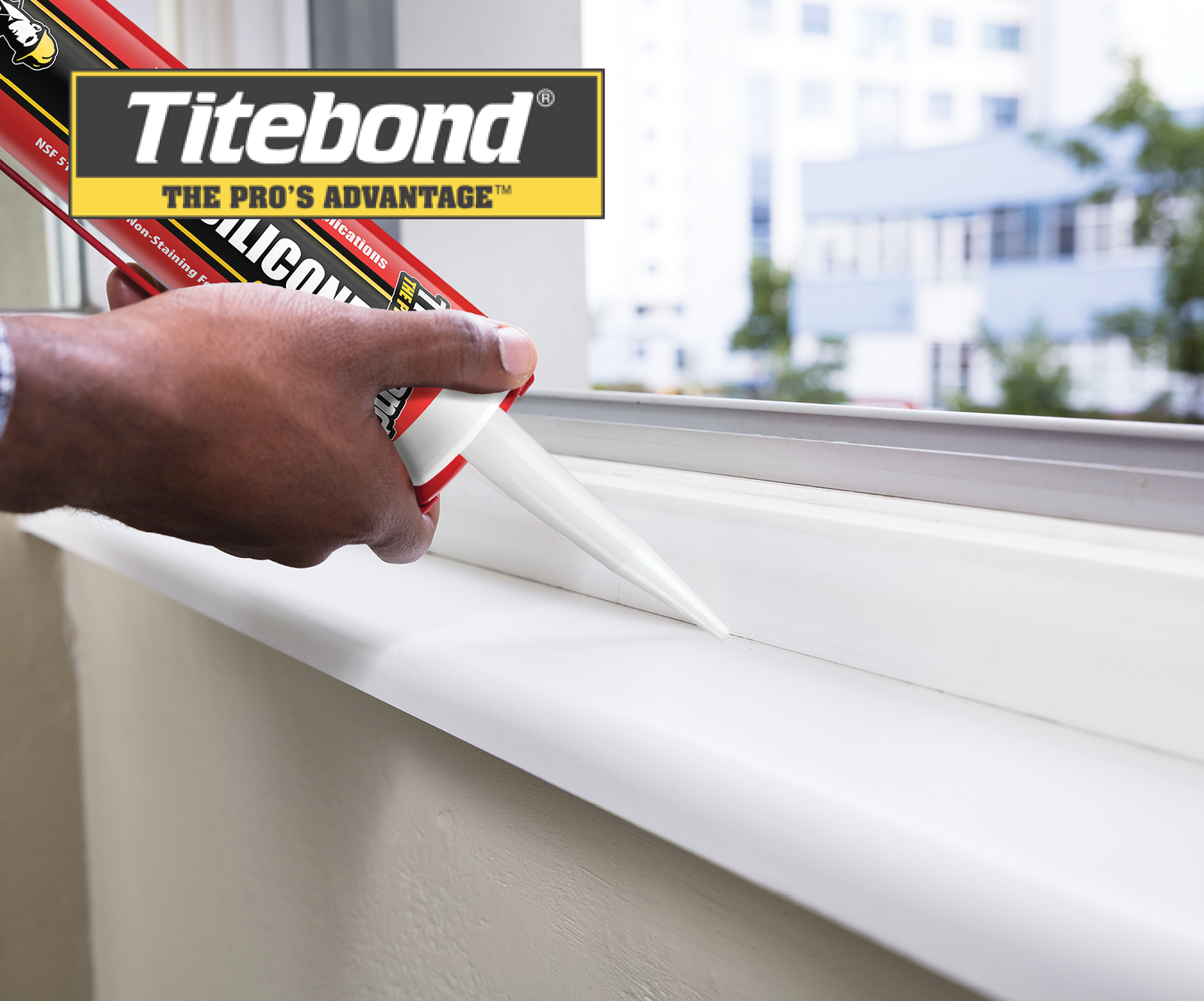Seven polymers. Hundreds of sealant formulations.
Sealant manufacturers develop scores of different sealants for the range of construction applications. And though each manufacturer develops its own unique formulations, the sealants share a chemical core. They originate from one or another of only a handful of polymers (chains of molecules that make up materials, such as plastics), each lending the sealant specific performance properties. Knowing these polymers, and the unique strengths – and weaknesses – each brings to a given sealant gives dealers a foundation for better understanding sealants. That, in turn, helps them select the right set of sealants to meet their customers’ varied needs on the job site.
Of course, the chemical core of a sealant is only the beginning. Sealant manufacturers take the polymer to the next level – and sometimes, to the ultimate level – modifying it to enhance performance characteristics, add desirable features and, ultimately, create a distinctive sealant technology.

Like most technologies, the base polymers used in sealants have advanced over time. Currently, the adhesives and sealants industry uses seven chemical bases to develop sealants for construction applications. The primary three are acrylic/water-based, silicone and the hybrid newcomer, silane-modified polymer. The others, which, generally are used for very specific applications, are rubber, butyl, polysulfide and polyurethane. Only the primary polymers are addressed here.
To demonstrate the role of these polymers in the formulation of innovative Titebond sealants, examples of products that emerged from each of them are included.
Water-Based Sealants: Easy and Versatile
There’s a lot to like about water-based sealants. They are easy to apply and tool and, because they are water cleanable, easy to wipe up, too. They also are easy on the nose; unlike their silicone counterparts, water-based sealants have little odor; they also are non-toxic. And they are versatile, with the ability to adhere well to most common building materials. On top of all that, they are paintable.
DuraMaster Sealant
Titebond takes the benefits of water-based formulation to the maximum with its new DuraMaster Sealant, the first-ever elastomeric water-based sealant with 100% joint movement capability.
Building materials move, sometimes, dramatically, with major temperature shifts, high winds, settling and seismic events. DuraMaster is able to expand and contract along with them without loss of adhesion. It truly is in a class all its own, as the first sealant of its kind to achieve the highest ASTM C-920 rating for sealant performance, Class 100/50 (expansion/contraction). Typical elastomeric sealants handle movement of only 25% of the original joint size and are rated Class 25 – the minimum rating for handling a moderate amount of movement.
DuraMaster spans gaps up to two inches wide, stays permanently flexible and is crackproof. True to its water-based formulation, it’s easy to tool and cleanup with water and is environmentally friendly. It’s ideal for interior and exterior applications, including windows, doors, trim and siding, and adheres to most common building materials.
Titebond Painters Plus
Titebond Painter’s Plus Caulk is a siliconized acrylic caulk that provides a strong, weather-resistant seal for most construction and repair applications indoors and out. It is ideal for sealing joints, repairing cracks and back-filling gaps for interior or exterior applications and adheres to most common building materials.
Painter’s Plus is easy to extrude, resists cracking and chalking and won’t stain or bleed through the paint. This mildew-resistant formula contains no plasticizers or phthalates, eliminating “shiners,” or changes to the sheen in paint.
Hybrid Polymer Sealants: Combining the Best
The most recent advancement in sealants isn’t a new technology but rather a combination of existing ones that together create a high-performing sealant type. Hybrid polymer sealants combine the chemistry and the properties of water-based polymers, silicone and polyurethane products into one sealant. Like water-based sealants, they are easy to apply and tool. They offer silicone’s ability to be applied in the cold and wet. They cure quickly, without shrinking, remain flexible and are paintable. They are high on durability and versatility – adhering to most surfaces – and low on VOCs. They are the contractor’s dream.
Titebond uses hybrid polymer formulation in several of its WeatherMaster premium-grade sealants.
WeatherMaster Sealant
Titebond developed WeatherMaster Sealant for sealing windows, doors, shutters, exterior trim, siding, gutters and vents. Then, it made it available in more than 200 colors, to match all popular siding colors, regardless of the material or manufacturer. That’s more colors than Crayola makes – and more than are offered by other sealant manufacturers.
WeatherMaster fills gaps up to one-inch wide and is paintable in one hour. It extrudes in low temperatures, adheres to damp surfaces, remains permanently flexible with zero shrinkage or cracks and is UV-, mold- and mildew-resistant.
Titebond WeatherMaster Metal Roof Sealant
No matter the color of metal roofing or siding, Titebond WeatherMaster Metal Roof Sealant can match it. It’s offered in more than 80 colors, all matching today’s popular metal roof and metal siding colors, regardless of material or manufacturer, and is paintable (excluding translucent). It also adheres to Kynar™ and can be used on a wide variety of metal roof, trim, architectural metal siding, aluminum, galvanized steel, galvanized gutters, flashing and downspouts.
Metal Roof Sealant is strong enough to earn Miami-Dade approval for use in high-velocity hurricane zones. It otherwise offers the same superior performances features as WeatherMaster Sealant, above.
Silicones
First developed for use in sealants a century ago, silicone remains a powerful polymer for sealing non-porous materials such as ceramic, glass, plastic and metal. It can be used indoor and out and withstands extreme weather condition and UV rays. It is non-toxic, but somewhat malodorous. It also can be a little tough to tool.
Titebond 100% Silicone
Titebond 100% Silicone Sealant is a premium, multi-purpose formula designed for both interior and exterior applications. This non-staining sealant won’t shrink, discolor or crack over time and is mildew resistant. It provides a watertight seal over vinyl, aluminum, glass, marble, granite, painted surfaces and most common building materials. It’s also NSF-51 certified for direct food contact.
Sealants have come a long way over the last 100 years, when silicone polymers were introduced. They have improved in terms of better environmental resistance, better joint movement capability and reduced hazardous ingredients. That said, there is no perfect sealant; dealers should recommend the sealant that best fits the needs of the customer and for its resistance to environmental stresses. The dealer wants to match sealant joint movement capabilities to the movement of the underlying substrates. The sealant installer is well advised to follow industry standards and specific instructions for each sealant type to take full advance of the sealant properties. When proper joint design, sealant selection and applications are combined, the project or building can remain free of water, dust and air intrusion for many years to come.

